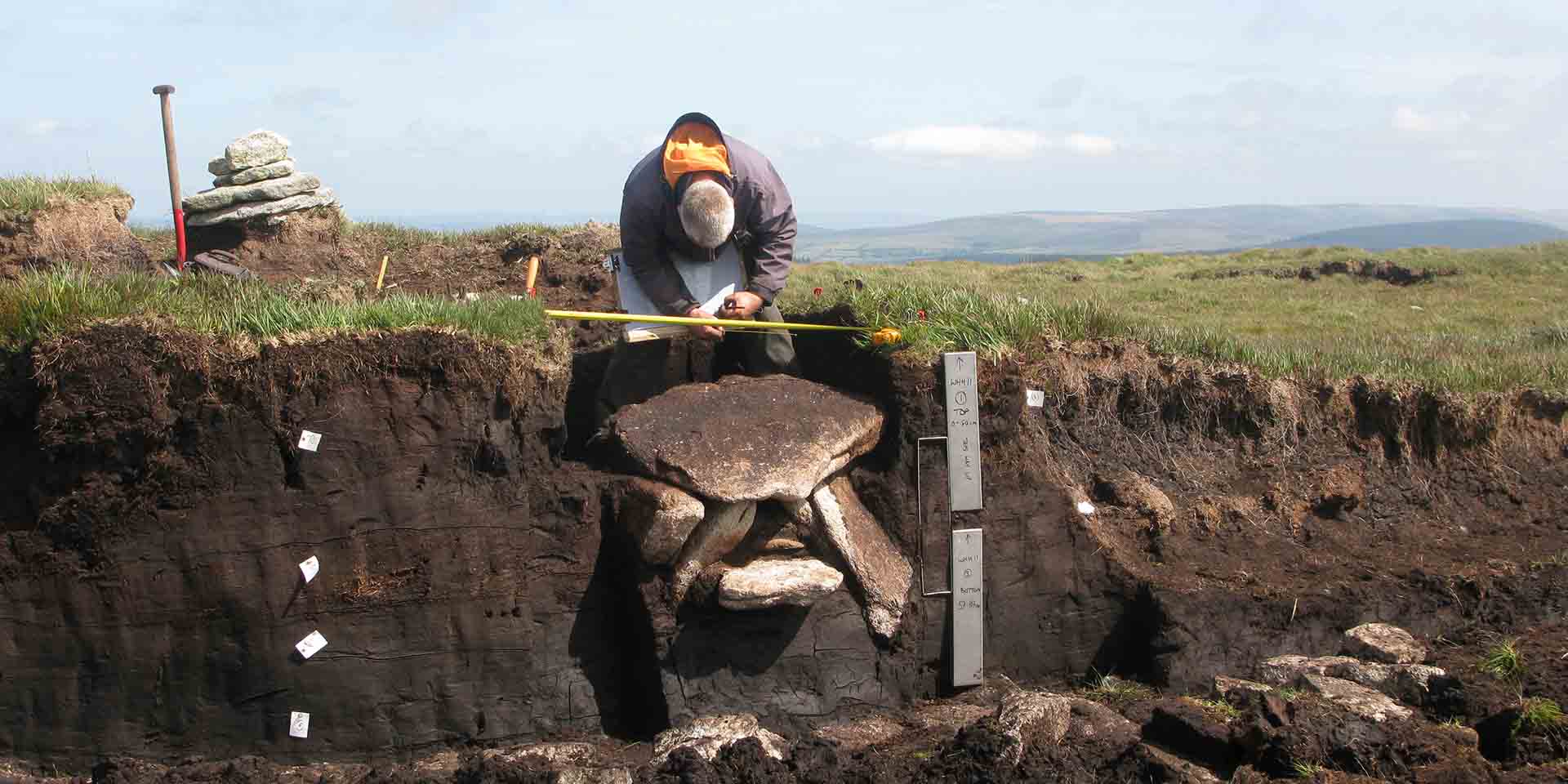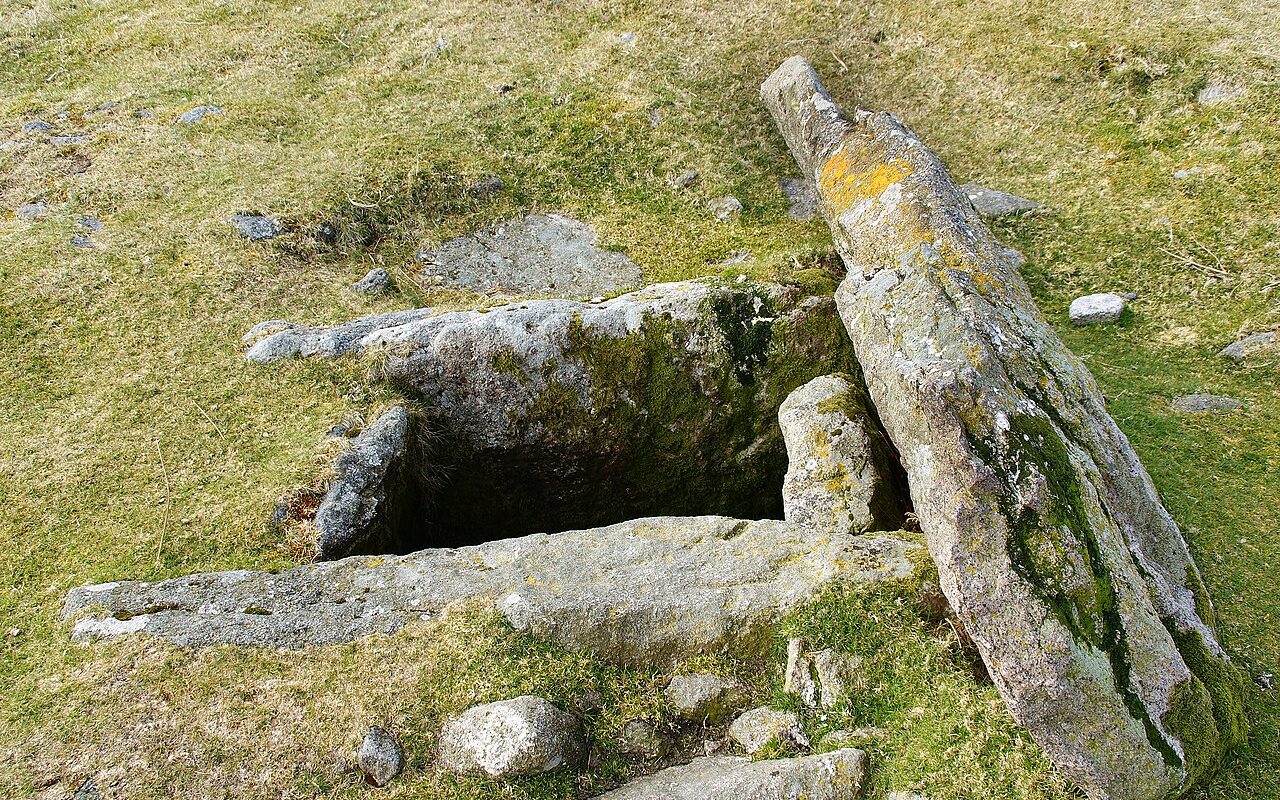Dartmoor, a British high plateau rich in prehistoric remains, has just enriched its heritage with the discovery of a new burial chamber from the Bronze Age, potentially 4,000 years old. This find was made thanks to the joint efforts of the Dartmoor National Park Authority and researchers from the University of Plymouth.
The importance of this discovery lies in its potential to reveal the lifestyles, funerary rituals and exchange networks of this ancient period. The site, explored as part of a project funded by park authority earmarked funds, was identified following peat erosion which exposed previously buried features. This discovery, which could equal in importance that of the Whitehorse Hill cist found in 1991, offers a new window on the mysterious past of this region.
Unexpected discovery on Dartmoor with unexpected potential
Due to the continued erosion of peatlands on the Dartmoor plateau, a remarkable archaeological discovery has been made. A cist, a chest-like stone structure used for burials during the Bronze Age, has emerged. According to the Local Democracy Reporting Service, the location of the new discovery is being kept secret to prevent the cist from being tampered with before it can be properly examined.
Dr Bray, lead archaeologist, said: “ We have all the potential for it to be something pretty special. We don’t know for sure if this is a cist, but it certainly looks like it “.
It highlights the importance of the peaty and humid environment of the site. It promotes the exceptional conservation of organic materials. In these anaerobic conditions, where oxygen is absent, objects such as clothing, wooden tools and even human remains can be remarkably preserved.
This offers researchers a unique window into the daily life of Bronze Age populations and their funeral rites. The artifacts they may find during deeper excavations will potentially allow them access to their social and economic environment. This exceptional preservation could therefore reveal invaluable details about how these ancient communities lived, worked and honored their dead.
Comparison with the discovery of Whitehorse Hill
The recent discovery on Dartmoor was immediately compared with that at Whitehorse Hill in 2011. The latter marked a turning point in the archaeological understanding of the Bronze Age in this region. At Whitehorse Hill, archaeologists have unearthed the cremated remains of a young woman, along with a trove of artifacts. These artifacts illuminated the cultural practices and commercial connections of the time.
Among these objects, a bearskin coat and more than 200 beads of various materials such as shale, amber, and tin underlined not only the high social status of the deceased, but also the extent of the networks of ‘exchange. Amber, in particular, indicates extensive trade ties. They had to cross considerable distances, well beyond the local borders of Dartmoor. Indeed, the probable origin of amber is the Baltic region.

Excavation at Whitehorse Hill. © Dartmoor National Park Authority
In this context, the discovery would provide similar, or even greater, evidence about life during the Bronze Age. If the conservation conditions of the newly found site are comparable to those at Whitehorse Hill, it is possible that the artifacts and organic materials found will provide an even clearer window into everyday aspects of life, burial practices and networks of exchange of the time.
This comparison with Whitehorse Hill therefore also includes the potential impact of this discovery on our understanding of the prehistory of Dartmoor. They could reveal important data on its cultural and commercial interactions across prehistoric Europe.
Archaeological techniques and challenges on Dartmoor
However, the preservation and extraction of the recently discovered burial chamber on Dartmoor poses significant technical challenges. Dr Bray, the archaeologist in charge of the project, said there were three options. Leave it where it is and let nature take its course, try to stop the erosion or dig.
He rejected the first option, calling it irresponsible archaeology. Additionally, simply stopping erosion would not eliminate the risk of air exposure damaging the contents. “ They are slowly deteriorating as we speak “, he warned the BBC.
According to Dr Lee Bray, the National Park Authority’s budget of £90,000 remains essential to ensure a methodical approach. This funding covers the use, among other things, of helicopters for transporting equipment. Indeed, these sites are otherwise inaccessible due to their remoteness or difficult terrain.
Additionally, laser scanning tools will precisely map the site before any excavation. This helps minimize disturbance to the surrounding terrain. Additionally, this mapping ensures that all artifacts are extracted securely and systematically.
The technical implications of these operations go beyond simple excavation. As Bray explains, the peaty area and constant humidity provide exceptional natural conservation conditions. But they also present risks of rapid deterioration of organic materials once exposed to air. This requires rapid and precise extraction, followed by specialized laboratory conservation to stabilize the artifacts.
This project represents a significant step forward for the archeology of the region. It promises to enrich global historical understanding by revealing little-known aspects of the lives of the people who inhabited these wildernesses millennia ago.



